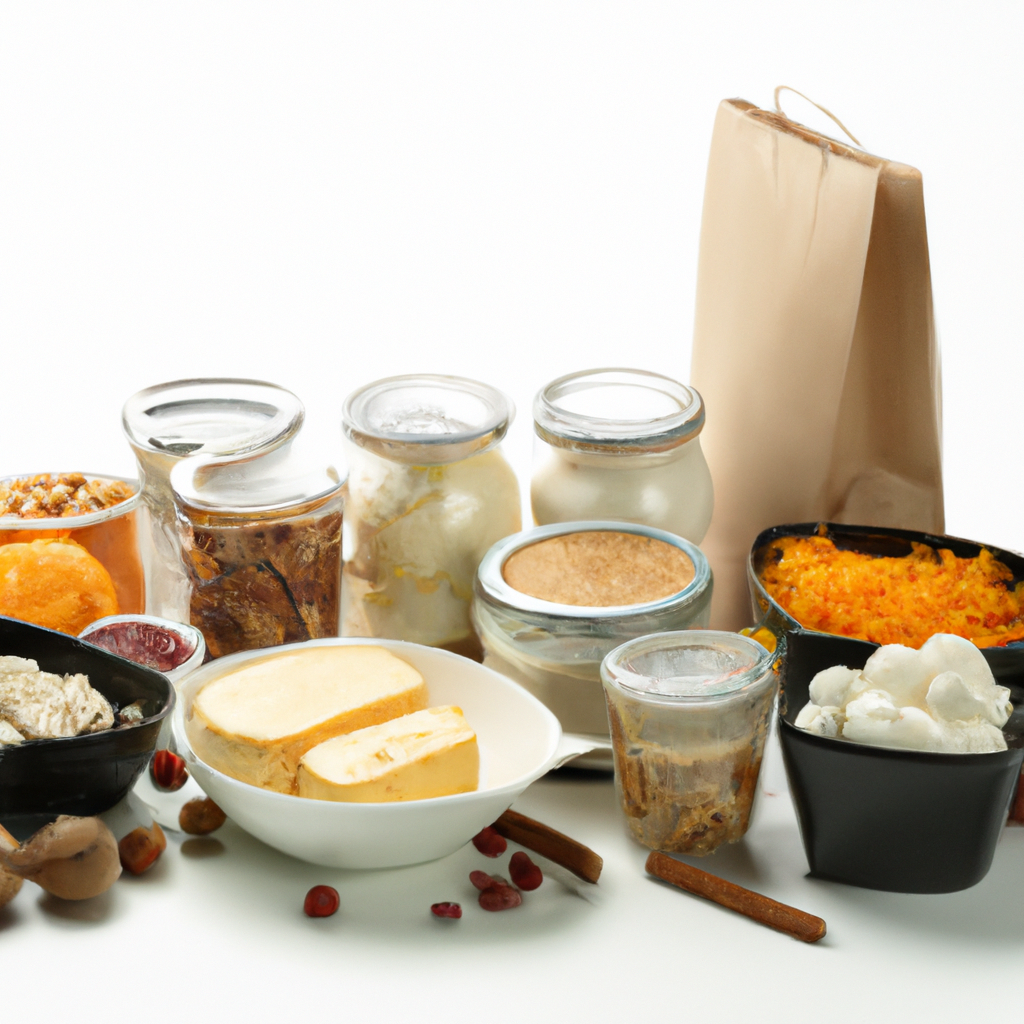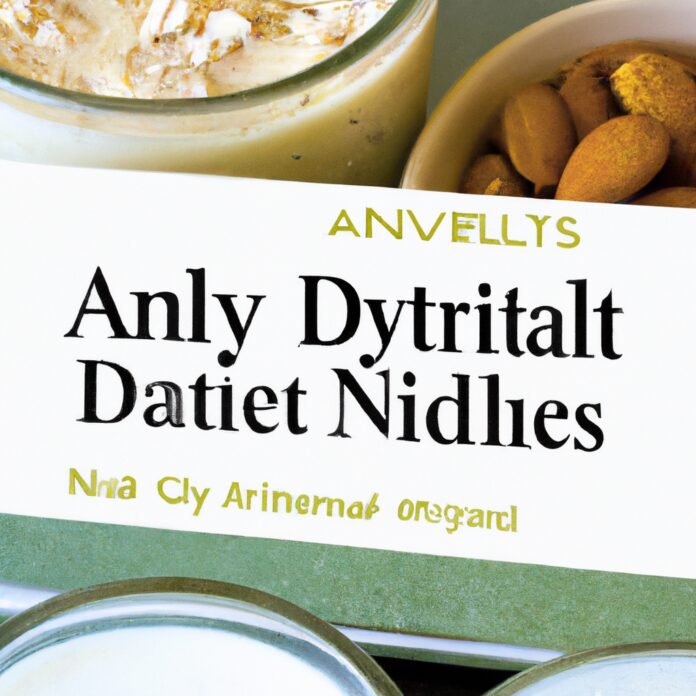In today’s health-conscious, environmentally focused world, dairy alternatives have become increasingly popular. Whether due to lactose intolerance, health restrictions, vegan diets or simply a desire to explore and diversify, many are turning to substitutes in the dairy section of the grocery store. But what are the best nutritional options? This article explores the world of dairy alternatives and how to make the best choice for your dietary needs.
1. Exploring the Alternative: A Look at Dairy-Free Options
Eliminating dairy from your diet may seem daunting, but don’t despair! There are lots of delicious, dairy-free alternatives out there that can give a unique flavor and texture to your cooking.
Coconut-Based Yogurt – Coconut yogurt is a great alternative to dairy-based ones. Not only does it have a smooth, creamy texture, it also has a subtle coconut flavor that will give your dishes an exotic twist. Try adding it to smoothie bowls for a rich and indulgent taste.
Flax & Chia Milk – Flax and chia milks are great for using in substitutions when cooking or baking. Both these milks are high in omega-3 fatty acids, making them an excellent addition to your pantry staples.
Almond Milk – Almond milk is widely available in grocery stores and it can be great for adding nutty flavor. It’s also one of the most affordable dairy-free milks, so it’s a great option to try out. It can be used for making pancakes, baking, and adding to hot drinks such as coffee.
Soy Milk – Soy milk can be a great option for those who are looking for a dairy-free milk. Not only is it high in protein, but it also has a creamy texture when it’s used for baking or in savory dishes. It also won’t change the flavor of your recipes too drastically, making it a great option if you’re looking for a subtle difference.
Oat Milk – Oat milk is an excellent choice for those who are looking for a creamy dairy-free alternative. It also contains a lot of healthy fiber, which makes it an ideal choice for those looking for a nutrition boost. Try it in baking, or for adding creamy texture to hot drinks or savory dishes.

2. Compare and Contrast: Comparing Nutritional Content of Dairy Alternatives
Soy Milk
Soy milk is one of the most commonplace dairy alternatives, and it’s usually cheaper than organic cow’s milk. The nutritional benefits of soy milk include it being a good source of vitamin D, a nutrient many people don’t get enough of. It is also a source of omega-3 fatty acids, and is cholesterol-free.
However, soy milk offers little in the way of protein. As a precaution, avoid soy milk that is not organic, as it is likely made with GMO soybeans, and often has added chemicals and sugars.
Almond Milk
Compared to soy milk, almond milk is lower in calories. It is also an excellent source of calcium and vitamin D. However, almond milk contains no protein, and has a much lower fat content than soy milk.
Almond milk is usually fortified with vitamins and minerals, such as iron. But it can also contain added sugar and artificial additives, so be sure to check the label before buying.
Rice Milk
Rice milk is the least common of the dairy alternatives, but like almond milk, it is very low in fat and calories. It is gluten-free and very mild in flavour, making it a good option for people with intolerances, or those who don’t like the taste of other types of alternative milks.
Rice milk also has little protein and no saturates, but it is often enriched with extra calcium and vitamins, such as vitamin B12.
Coconut Milk
Coconut milk is a great alternative for those looking for a sweet-tasting, creamy milk that is higher in calories than other types. Coconut milk packs more calories and fat than other types of alternative milks. It is also high in calcium, magnesium, and potassium. However, coconut milk is quite high in sugar, so opt for an unsweetened variety if you want to limit your sugar intake.
In conclusion, each dairy alternative has its own unique nutritional content to consider. If you’re trying to decide which one is right for you, consider the type of diet you prefer, your own allergies or intolerances, and the taste and texture of each.
3. Picking a Winner: Identifying the Best Nutritional Option from Dairy Alternatives
With a growing market for dairy alternatives, it can be difficult to know which option to choose. But, the good news is you don’t have to sacrifice nutrition in order to find delicious non-dairy options. Here are some tips to help you determine which alternative dairy product provides the most nutritional value.
To pick the winner, you should examine the protein and calcium content of the milks. Soy milk tends to offer the highest amount of protein per serving – with up to 8 grams per cup. While almond milk has the least protein content (1 gram per cup), it has fewer calories and fat than other alternatives.
If calcium is your priority – which is important for bone health – look for a milk that is fortified with calcium. Fortified Soy milk usually contains 30% of your daily calcium requirement. Other alternatives that are high in calcium include oat milk, coconut milk, and hemp milk.
- Soy milk offers up to 8 grams of protein per cup.
- Fortified soy milk contains up to 30% of your daily calcium.
- Almond milk has the least protein content.
- Oat milk, coconut milk, and hemp milk are also high in calcium.
It’s also essential to consider vitamins and minerals when selecting an alternative. Vitamin B12 is usually added to fortified milks (almond, oat, coconut, and hemp), while vitamin D is added most often to soy milk. Depending on the type of milk, other vitamins and minerals might also be included, like A, B2, B6 and magnesium.
It’s best to read labels carefully and compare nutrition facts for each milk in order to get the most nutritional value for your money. After all – your dietary choices are personal and depend on your individual health goals. Choose the alternative that works best for you and your family.
4. The Future of Dairy Alternatives: What’s Next?
The dairy alternative market is growing rapidly, and the future for dairy alternatives looks promising. As more people become aware of the health and environmental benefits of dairy alternatives, production and demand for these products will continue to increase. In fact, analysts predict that the global plant-based milk market could reach $35 billion by 2024.
Collaborative efforts between food scientists, agronomists, and nutritionists are also playing a major role in helping to advance the development of dairy alternatives. Many alternative milk brands are working to develop more innovative products to help meet the growing demand for dairy alternatives.
Many of the plant-based milks on the market today are made from soy, almond, rice, coconut, and oat. These are all relatively nutrient-dense sources of plant-based protein, carbohydrates, fats, and minerals. But these are far from the end of possible plant-based milk sources.
Researchers are currently assessing the use of legumes, seed oils, and grains as possible sources of plant-based milk. For instance, experts are starting to explore the potential of using peas, flaxseeds, chia seeds, and quinoa as dairy alternative ingredients.
Other upcoming advancements include new dairy-free cheese and yogurt options, which are on the verge of becoming available in the US and other parts of the world. Many of these vegan alternatives are now more comparable to dairy products in terms of texture, taste, mouthfeel, and traditional food application.
Overall, the market for dairy alternatives is on its way to becoming bigger than ever. As more research continues to show the benefits of plant-based milk and other products, it’s only a matter of time before dairy alternatives become a staple of vegan and non-vegan diets alike.
At the end of the day, dairy alternatives are the perfect fit for everyone and their various dietary needs. Not just packed with vital nutrients, they also offer an exciting array of flavors. Moreover, these increasingly popular dairy-free options give us the opportunity to make conscious, healthier decisions about what we put into our bodies. Take the leap and discover the delicious options out there; your tastebuds won’t be disappointed.

